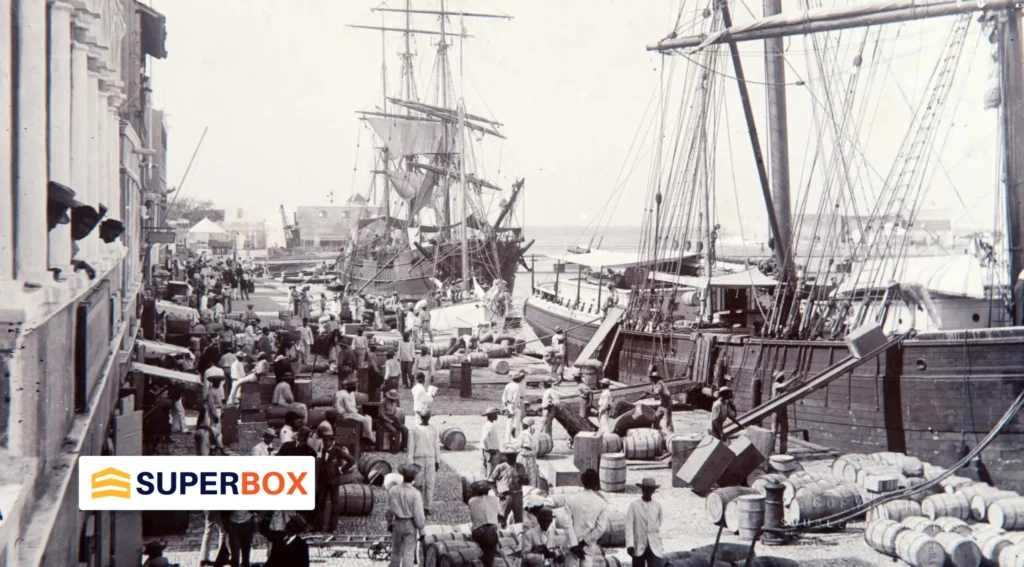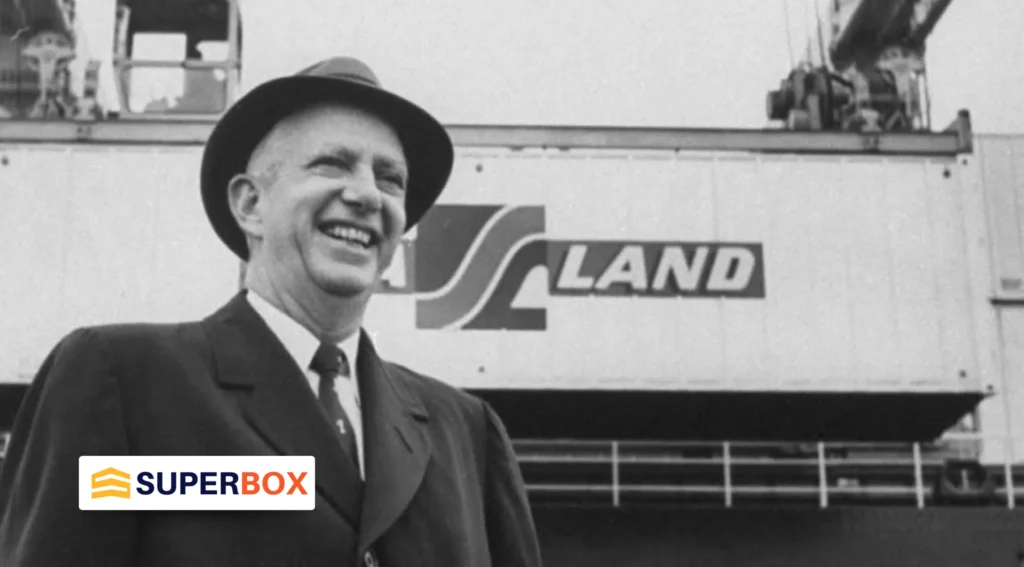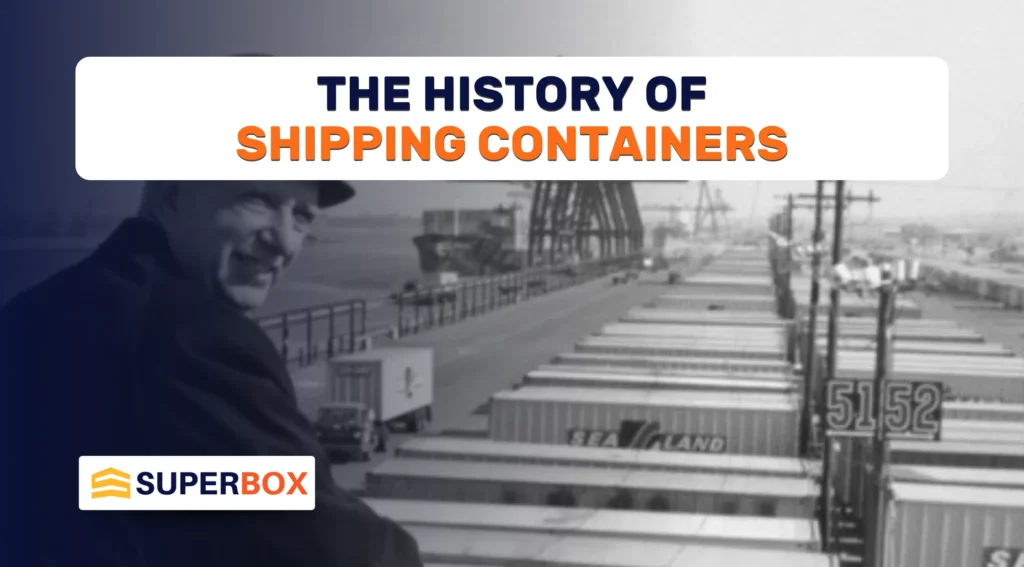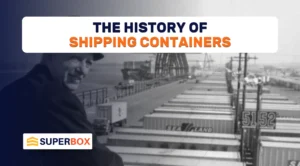The history of shipping containers is a remarkable tale of innovation that has transformed the shipping industry. Starting from humble beginnings, these containers have become essential to global trade, completely changing how goods are transported worldwide.
In this blog, we will explore the evolution of shipping containers and highlight key figures like Malcolm McLean, who significantly influenced their development. We’ll also discuss the importance of standard sizes and their impact on international trade. Join us as we uncover how shipping containers have revolutionized the movement of goods and continue to shape our global economy today.

The Early Days of Cargo Transport Before Shipping Containers
Before shipping containers were invented, moving goods took a lot of work. Cargo was typically loaded by hand onto ships, trucks, or trains, which had many drawbacks.
Inefficiencies and Delays
Loading and unloading cargo took a lot of time and needed many workers. This often led to long delays, especially during busy shipping seasons or bad weather. Coordinating the transport of goods across different methods was also difficult.
Damage and Loss
Manual handling increases the risk of damage to cargo. Fragile items were particularly prone to breaking while being loaded or unloaded. Furthermore, items could easily get lost or misplaced, causing more problems for merchants and shippers.
Limited Capacity
Early transport methods, like horse-drawn carts, could only carry a small amount of goods at a time. This limited the quantity of products that could be moved, making it tough for businesses to expand and reach new markets.
The Need for Innovation
As global trade grew in the late 1800s and early 1900s, it became clear that a better system was necessary for moving goods efficiently. The challenges of traditional methods created a strong demand for new solutions. World War II and the Vietnam War highlighted these inefficiencies, further pushing the need for innovation. Eventually, this led to the invention of standardized shipping containers, transforming the shipping industry and making the transport of goods faster, safer, and more efficient worldwide.

The Catalyst: Malcolm McLean
Malcolm McLean was a key figure in the development of shipping containers and had a major impact on how goods are transported. As the owner of a trucking company, he faced many difficulties when loading and unloading cargo. He saw how slow and inefficient the process was, which often led to delays and higher costs.
In the 1950s, McLean came up with a revolutionary idea: to create standardized shipping containers that could be easily moved between ships, trucks, and trains. His vision was to streamline the entire shipping process. By using containers that were all the same size, he aimed to make loading and unloading much faster and simpler.
This new system would not only save time but also reduce the costs involved in global shipping. McLean’s innovative approach transformed the shipping industry and laid the groundwork for modern logistics. Today, we rely on these advancements to move products quickly and efficiently around the world. His work changed how businesses operate, allowing for faster deliveries and helping global trade grow significantly. McLean’s vision of standardized shipping containers has become a crucial part of how we manage supply chains and transport goods today.
The Standardization of Container Sizes
One of Malcolm McLean’s biggest achievements was creating standard container sizes, especially the twenty-foot equivalent unit (TEU). This standardization was essential for making freight transport more efficient.
With containers of uniform size, shipping companies could load and unload cargo more easily without having to adjust their equipment for different shipments. This allowed for a smooth transition between ships, trucks, and trains, which helped reduce handling time and lowered the chances of damage during transport. Overall, standardizing container sizes made the shipping process faster and safer for everyone involved.

Keith Tantlinger and Container Design
Keith Tantlinger played a key role in improving the design of shipping containers. His innovative ideas greatly enhanced cargo security, ensuring that goods were better protected during transport. One of his major contributions was making it easier to stack containers, which was especially important for busy ports where space is limited. Thanks to Tantlinger’s work, containers could be loaded and unloaded much more quickly and efficiently.
This not only sped up the shipping process but also helped ports operate more smoothly, paving the way for the fast-paced global trade we see today. His designs have become a vital part of how shipping containers are built and used around the world.
The Future of Shipping Containers
The future of shipping containers is full of exciting possibilities. As the industry evolves, new trends in technology and design are emerging that aim to make shipping practices both more efficient and environmentally sustainable. For instance, innovations such as smart containers equipped with tracking devices are being developed to enhance monitoring and security during transport. Additionally, there’s a growing focus on creating containers from eco-friendly materials, which can significantly reduce the environmental footprint of shipping operations.
In today’s modern shipping industry, there is an increasing commitment to minimizing environmental impact while maintaining operational efficiency. This dual focus is essential as global trade continues to evolve and expand. Shipping containers are expected to remain a vital component of the logistics landscape, facilitating the movement of goods across the globe seamlessly and effectively.
As companies look to improve their supply chains, these advancements will ensure that shipping containers not only meet the demands of current trade practices but also contribute positively to sustainability efforts. The ongoing development in this field suggests that shipping containers will play an even more significant role in the future, helping to connect markets and support international commerce responsibly.
Conclusion
The history of shipping containers is an intriguing tale of innovation that has changed global trade. In the past, the process of manually loading cargo was slow, but with leaders like Malcolm McLean and Keith Tantlinger, the shipping industry has greatly improved in efficiency and security.
Standardized container sizes have made logistics easier, allowing for quicker and safer transport of goods to their final destination. As we look to the future, new technologies and a focus on sustainability will continue to strengthen the importance of shipping containers in global trade, especially in busy port cities and for ocean shipping. They will remain essential in our interconnected economy.
Finding the Perfect Shipping Containers with SuperBox
At SuperBox, we proudly offer high-quality shipping containers that cater to all your transportation needs. But our containers are more than just for shipping—they’re perfect for storage and a variety of innovative uses! Whether you need extra space for inventory, a portable workspace, or a unique project structure, our containers can be customized to meet your specific requirements.
We have a wide selection to ensure you find exactly what you need, and your satisfaction is our top priority. Our knowledgeable team is committed to providing exceptional service and support throughout your experience.
If you’re ready to discover the perfect shipping or storage container for your business, contact us today at 210-557-006. Let SuperBox help you unlock the full potential of container solutions—experience convenience and efficiency with us!


